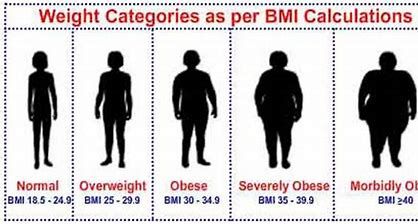GUEST COLUMN: Dr. N Prabhudev
Rich Man’s disease! It is also a poor man’s rich disease!
Obesity is a metabolic disorder. For Indians, obesity is defined as a body mass index (BMI) of 25 or more. Morbid obesity is affecting 5% of the country’s population. The prevalence of abdominal obesity in the country was found to be 40% in women and 12% in men. 5–6 /10 women between the ages of 30–49 are abdominally obese. We are in an obesity epidemic. Every 10kg of extra weight reduces life by three years. So, if someone is overweight by 50kg, they might end up losing 15 years of life. We also saw that mortality during COVID was three times higher for overweight and obese patients.

Obesity!
• Gynecoid or pear-shape – fat accumulation in lower body such as hips and thighs
• Android or apple-shape – Abdominal or central obesity, fat accumulation in the upper body such as the visceral or abdominal region. Abdominal obesity has been on the rise. The abdominal obesity has been defined as waist circumference of more than 80 cm in women and of more than 94 cm in men.
Central obesity, is considered the more serious form of fat distribution, as it predisposes individuals to various metabolic disorders and diseases.
Indians are getting fatter – and it’s a big problem. Long known as a country of malnourished, underweight people, it has broken into the top five countries in terms of obesity in the past few years. Too much body fat increases the risk of non-communicable diseases, including 13 types of cancer, type-2 diabetes, heart problems and lung conditions. And last year, obesity accounted for 2.8 million deaths globally.
Healthy weight is important for overall health and can help you prevent and control many diseases and conditions. If you are overweight or obese, you are at higher risk of developing serious health problems, including heart disease, high blood pressure, type 2 diabetes, gallstones, breathing problems, and certain cancers.
• Obesity is having a high amount of extra body fat.
• Overweight is having extra body weight from muscle, bone, fat or water.
Body mass index – BMI- Body Mass Index is a person’s weight in kilograms divided by the square of height in meters. BMI = Weight (in pounds)/Height (In inches) 2 ✕ 703; Where 703 is a conversion factor. Age is not a factor in BMI for adults, but it is for children.
A BMI of less than 18.5 means a person is underweight.
A BMI of between 18.5 and 24.9 is ideal.
A BMI of between 25 and 29.9 is overweight.
A BMI over 30 indicates obesity.
Obese Class I 30 – 35
Obese Class II 35 – 40
Obese Class III > 40
Waist-to-hip ratio – WHR

Waist-to-height ratio – divide waist size by their height.
A person’s WHR compares their waist size with that of their hips. A high WHR is when an individual has higher levels of visceral fat, the fat in the abdominal cavity that surrounds several major organs. Research has shown that people with a high WHR are more likely to develop CVD and diabetes.
The higher the waist measurement in proportion to the hips, the greater this risk. For this reason, the WHR is a useful tool for calculating whether a person has a moderate weight and size.
To calculate their WHR, a person should measure around their waist at the narrowest part, usually just above the belly button. They can then divide this measurement by the width of their hip at its widest part. For example, if a person’s waist is 28 inches, and their hips are 36 inches, they will divide 28 by 36, giving a WHR of 0.77.
Low risk 0.8 to 0.9
Moderate risk 0.8–0.89
High risk over 1.0
Keep your waist to less than half your height.
The waist-to-height ratio – is another tool that might predict the risk of heart disease, diabetes, and overall mortality more effectively than BMI. If the result is 0.5 or less, they are likely to have a moderate weight. 0.52 Or above significantly increases a person’s risk of developing heart complications.
Healthy life style, healthy diet, physically active, sleep hygiene, mental health, risk free habits! Disease specific treatment.






More Stories
The art of life and to make one’s life a ‘work of art’!
Life is imperfect, incomplete, and impermanent
The happiest years of one’s life!